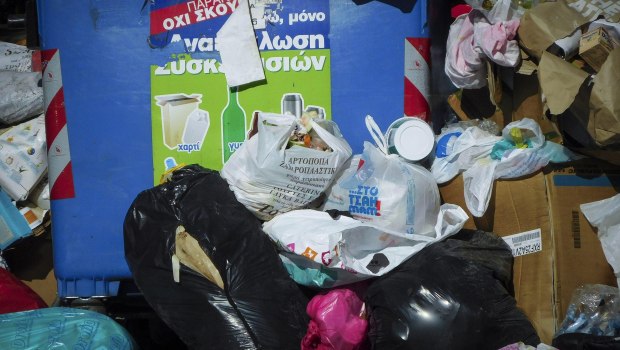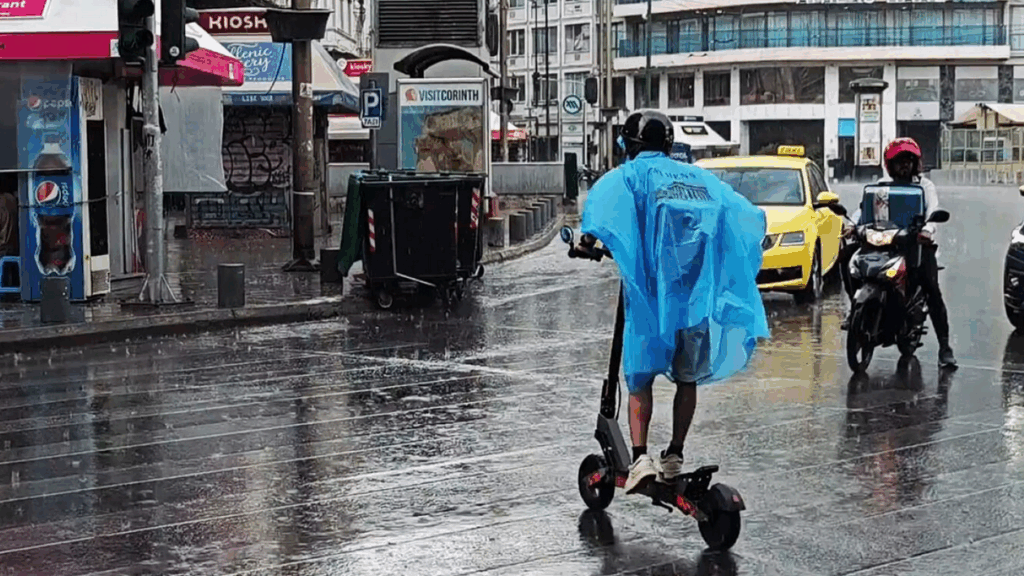End of social media for children up to 15 years old from October — Automatic lockouts when
Source: ProtoThema English
A government plan foresees the prohibition of access to social media for minors under 15, as well as blocking access for minors under 18 to online betting platforms and websites selling tobacco products. As government sources told “THEMA”, Greece will be ready by the end of October to become the first European country to impose restrictions on the use of social networks by minors, aiming to protect them.
Australia will give the global lead by banning access for minors under 16 to social networks (starting October 10) and online dating platforms, aiming to protect them from algorithmic manipulation and sexual harassment, among other risks. Meanwhile, the EU is feverishly preparing something similar. European Commission President Ursula von der Leyen stated that “France, Spain, Greece, Denmark, and Italy are testing the Commission’s plan for implementing age verification in their national apps.” Greek Prime Minister Kyriakos Mitsotakis confirmed the country’s participation, revealing that “we are considering banning the use of social media for those aged 16 and under, similar to Australia.”
Dialogue
As “THEMA” reveals, Greek government agencies have engaged in extensive discussions with social media companies and internet giants like Google on how these restrictions could be implemented. According to sources at the Ministry of Digital Governance, the technology being used originates from the EU, and proposals from online companies have been evaluated. However, final decisions on the scope of restrictions will be made exclusively by the Prime Minister, who has been personally involved in the issue.
As Greece declares itself almost ready to implement the social media “ban” for minors immediately, a delegation from the European Commission will arrive in Athens next Thursday to be briefed on the project’s progress and exchange technical expertise.
According to government sources, the Greek — and by extension, European — plan may share the same goals as Australia’s, but the implementation method will differ. In Australia, in cooperation with social media platforms, individuals under 16 are banned from holding accounts on 16 specific social networks, including Facebook, TikTok, and YouTube. In practice, Australians may need to use identification documents to create or maintain social media accounts. However, there is a downside: on some platforms like TikTok, anyone (including minors) can still browse content without logging in, as an “external visitor.”
In contrast, the Greek plan does not rely on platform-based restrictions but controls access at the device level — i.e., through mobile phones, tablets, and other devices used by minors.
Access control, filtering, and complete blocking — even without logging in — will be handled through the Kids Wallet app, introduced by the Ministry of Digital Governance. Since minors’ details are already stored in this state application, it will block or remove social media platforms (Facebook, TikTok, Instagram, X, etc.) from search results or direct access if the device user is under 15 (as opposed to under 16 in Australia).
Similarly, the same filtering mechanism will block access to platforms and websites restricted to people over 18, such as online gambling platforms, tobacco and alcohol sales websites, and pornographic sites. Naturally, online dating and sex platforms, such as Tinder — the world’s most popular dating app — will also be blocked for minors.
The “heavy lifting” will be done by the device in the minor’s hands (provided, of course, that the parent or guardian has ensured all security protocols are in place — for example, by having the Kids Wallet activated). The device will automatically enable all safety protocols, indicating whether the user is over 15 or 18 years old. Depending on the user’s age and the platform — for example, if the user is 14 and tries to access an online gambling site — the device will restrict the content accordingly.
The first “barrier” raised by the minor’s device will be followed by a second barrier — this time from the social media platforms themselves. These platforms will adjust their safety measures and increase pressure on users to accurately declare their age if there’s suspicion that minors are using their services.
According to information obtained by “THEMA”, the technical method for banning minors from social media has been outlined by Brussels, which is guiding member states — including Greece, which is ahead of the rest — through the necessary steps. The goal is to ensure uniformity across the EU, shared solutions, and easier exchange of technical expertise and experience among countries that decide to adopt such restrictions to protect their underage populations.
In recent months, particularly over the summer, European authorities maintained open communication channels and close cooperation with social media platforms to find mutually acceptable solutions. Greek authorities also praised this cooperation, noting that some major tech companies worked diligently on the issue of protecting minors. One notable example is Google, which submitted a set of protection proposals to both European and Greek authorities. Although Google’s proposals were considered technically sound and interesting, they were not adopted by the EU because national apps — such as Greece’s Kids Wallet — already offered ready-made solutions.
One unresolved issue is whether and how platforms like WhatsApp, which are also used for educational purposes and communication between parents and children, will be included in the restrictions.
A Political Decision
Technically, Greece is fully prepared to become the first EU country to block social media use by minors. However, the if, how, when, and in what form this will happen depends entirely on political decisions, which rest with the Prime Minister. He has, however, indicated a willingness to move forward with the ban to protect children.
European Commission President Ursula von der Leyen paved the way earlier in her speech at the United Nations in New York, where she stressed that the EU and Australia will cooperate to protect children on social media through bans or age limits.
Von der Leyen said she was inspired by Australia’s 2024 law setting minimum age requirements for social media, banning access for children under 16. “Here in Europe, we are watching and will learn from you as you implement the world’s first pioneering social media ban,” she added. Her speech also focused on the design of social media platforms, stating that they are addictive by design, driven by manipulative algorithms ultimately aimed at enriching Silicon Valley tech billionaires.
She also highlighted how France, Spain, Greece, Denmark, and Italy are testing the Commission’s plan to integrate age verification into national apps.
The EU announced the framework in July, when the Commission issued guidelines to protect minors under the Digital Services Act (DSA). “We’ll be happy to share them with you,” von der Leyen said, addressing Australia and explaining that a team of experts will advise on how to regulate age limits for minors on social media.
The Greek Prime Minister also participated in the Australian-organized event “Protecting Children in the Digital Age,” held during the High-Level Week of the 80th UN General Assembly in New York.
In his remarks, he emphasized the need for global action to protect children from the consequences of uncontrolled social media use. As he put it:
“We are conducting the greatest uncontrolled experiment ever on our children’s minds. We don’t know what the consequences will be, but we are almost certain they won’t be positive.”
Prime Minister Kyriakos Mitsotakis noted that Greece has already taken initiatives in this area, starting with the ban on mobile phone use in schools, and added:
“We are considering banning the use of social media for those aged 16 and under, as is being done in Australia.”
He said that leaders, knowing the data on how social media affects children’s brains and psychology, have a duty to act.
“First, we need to help parents, because this should not be solely the parents’ responsibility. I know how difficult it can be for a single parent to ask their child to disconnect from social media when everyone else is doing the same. In Greece, we took this initiative very seriously. We banned mobile phones in all our schools, and that had a transformative impact on the educational experience. But we went a step further to address the main problem — or rather the main excuse — that tech companies always use when we talk about age limits on social media: age verification.
They say: ‘How can we know the real age of users?’
First of all, they know very well the age of users because they can tell through the content. They know so much about us. In fact, they have a very accurate picture of our age. But what we did was to create a website (referring to the Kids Wallet) that essentially does two things. First, it connects to our digital registry. Now we have a digital age-verification tool for parents, so they can link it when buying their child’s first phone. They also have access to an easy-to-use parental control app for social media use.”
He also stated that:
“In Greece, we are ready to take it a step further and seriously consider banning the use of social media by setting a digital age of majority,” revealing that he has asked his team to work closely with the Australian government’s team to explore how this could be implemented.
“Of course, here we’re only talking about social media, but we haven’t yet examined how our children interact with AI chatbots. That’s going to be another topic for immediate discussion. Do we really want our children to have digital friends who could lead them into behaviors that are not only unacceptable but potentially destructive? We have a responsibility not only to cooperate with tech companies but also to make it clear who sets the rules. Tech companies make plenty of money; they don’t need to profit from our children’s vulnerability.”
Putting the brakes on doomscrolling
Why are governments, one after another, rushing to impose bans and restrictions on minors’ use of social media?
Because scientific reports and studies are increasingly confirming that “doomscrolling” — the compulsive scrolling through short videos and endless posts — is linked to ADHD (Attention Deficit Hyperactivity Disorder), a neurodevelopmental disorder, as well as other learning and developmental disorders. These often affect multiple brain functions, including learning, communication, motor skills, emotions, and attention.
According to scientists, addiction to social media causes a range of mental and other problems. The most common include:
- Attention deficits and ADHD symptoms
- Short-term memory impairment
- Feelings of negativity, anxiety, and depression when not using social media
- Eating disorders
- Reduced reading ability
- Social isolation
- Lower productivity
- Poor academic performance
It also causes sleep problems and overexposure to blue light from screens.
One of the most striking — and recent — examples is TikTok, which is often described as having “the best algorithm in the world — an AI that reads your mind and predicts what you want to see.”
Scientists clarify that the algorithm doesn’t literally control the mind — it affects it by causing harm. Many studies have shown that social media algorithms trigger dopamine release in the brain with each video or post viewed.
The result is twofold:
- Overproduction of dopamine, and
- A sense of deprivation when the brain is no longer exposed to the stimulus that trained it to overproduce it.
This is how addiction develops.
Put simply, every time we stop watching short videos one after the other, dopamine levels drop, making us crave the previous state of pleasure. The brain pushes us to reopen the app to return to that state. The algorithm can detect language, faces, and backgrounds within milliseconds, tailoring content not only to what you say but also to where and how you say it. It’s an experience that targets the brain’s reward system directly.
This is essentially the digital equivalent of nicotine: each swipe is like a small hit that provides instant gratification and makes you want more. Like every puff of a cigarette, each new video creates a microburst of dopamine — a small but measurable spike in the chemical associated with reward.
The process is fast, instinctive, and highly satisfying, leading users to doomscroll endlessly from one post to the next, often skipping sleep or meals, trapped like “zombies.”
This happens because the algorithm encourages overconsumption of content — not because the user has the time, but because the app “traps” them: one video leads effortlessly to the next. And somewhere along the way, without realizing it, the user has spent half an hour watching strangers dance, eat hamburgers with microphones inside their mouths, perform skits, explain conspiracy theories with cute animals in the background, or girls dancing to the latest TikTok trend taking the world by storm.
Many factors contribute to this addictive transformation of the brain into a “dopamine production factory” every time we use social media. There’s the excitement and anticipation of the next unpredictable video — since the platform is designed to surprise. The videos are extremely short, meaning users can consume hundreds of clips in just a few minutes.
Ease of use also plays a role: all it takes is a thumb movement, reminiscent of casino slot machines.
The algorithm doesn’t rely only on what you like, but on how you behave:
- How long you watch a video or post
- Whether you watch it again
- If you increase the volume
- If you read or write comments
All this is data — and TikTok absorbs it constantly.
Using advanced deep learning techniques, the system creates a dynamic psychological profile for each user. You don’t tell it who you are; it tells you. Moreover, it doesn’t need to connect you to friends or groups, nor does it limit you to what you follow.
Instead, it recommends what it thinks you want — even if you didn’t ask for it. This leads to greater exposure, more time on the app, and less decision fatigue.
The Australian Example
The alarm bells over how social media affects children’s brains have been ringing worldwide for years. FBI Director Christopher Wray warned U.S. lawmakers that “the Chinese government could control the recommendation algorithm, which could be used for influence operations.” There are also indications that China has already acted, designing its local social network to promote educational and health-related content to go viral among young people.
Thus, the algorithm doesn’t numb Chinese students with endless doomscrolling through silly makeup or dance videos, reducing productivity and critical thinking. Instead, it boosts their IQ and well-being through riddles, problem-solving, philosophy, activities, and wellness tips.
Additionally, a cybersecurity report published in July 2022 by Australian company Internet 2.0 examined the app’s source code and found “excessive data collection.”
Analysts stated that TikTok collects:
- Location data
- The specific device used
- Information about other installed apps
All of the above, combined with the surge in youth violence, the unchecked presence of predators using social media to groom and exploit minors, and other troubling phenomena, led the Australian government to realize that the situation had reached a breaking point.
Australia’s eSafety Commissioner Julie Inman Grant presented a list of platforms likely to be subject to upcoming age restriction laws. While Australians expected the list to include Facebook, TikTok, Instagram, Twitter, and YouTube, it turned out that the scope of the legislation banning access for those under 16 is even broader.
The law, which will come into force on December 10, will limit the ability of individuals under 16 to maintain accounts on many social media platforms.
Recently, the eSafety Commissioner also introduced self-assessment guidelines for companies to determine whether their platforms will be classified as age-restricted.
According to these guidelines, companies will be required to restrict access to platform accounts for users under the age of 16 when:
- the content is accessible to or delivered to users in Australia,
- users are able to make posts,
- users can connect with or interact with other users,
- online social interaction is the primary or significant purpose of the platform.
The eSafety Commissioner has sent letters to an “initial list” of 16 companies — including Facebook, TikTok, and YouTube — notifying them that they may fall under the definition of social media platforms that will be subject to age restrictions.
Ask me anything
Explore related questions
The original article: belongs to ProtoThema English .




